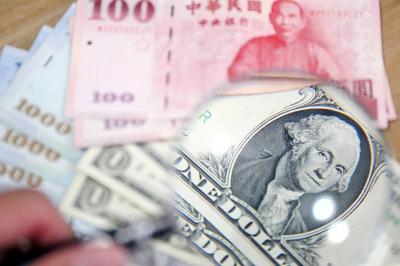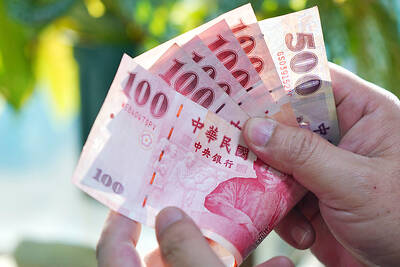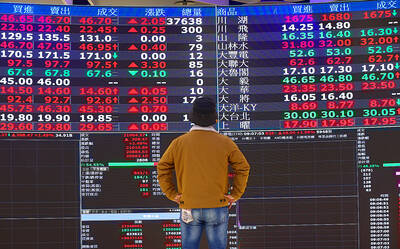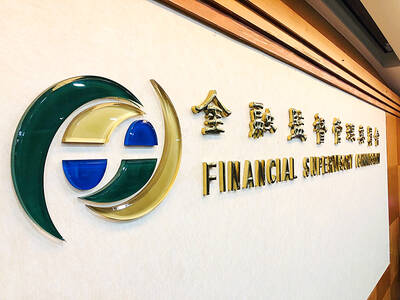Tourism revenue from Chinese visitors over the past months have been far below the expectations of the Tourism Bureau, with the number of visitors and their level of spending in Taiwan falling short of estimates, a survey conducted by the Institute for Business Development (IBD, 商業發展研究院) said.
IBD vice president Tu Tze-chen (杜紫宸) said at a press briefing yesterday that based on the monthly average of between 70,000 and 80,000 arrivals from China, it was estimated that the total for this year would be about 900,000, way below the Tourism Bureau’s forecast of 1.6 million visitors.
Through interviews with 28 experienced tour guides and the observations of IBD researchers who posed as tour guides to collect information on tourists’ consumption behavior, the institute drafted an analysis on the benefits to the tourism sector from the opening to Chinese visitors.
The report indicates that, to the disappointment of the travel sector, Chinese tourists each spend an average of NT$35,244 for an eight-day, seven-night stay in Taiwan, which means that revenues from Chinese tourists this year may not reach the Tourism Bureau’s projected NT$30 billion, which is based on an estimated average spending figure of NT$62,601 per person.
IBD researcher Lee Chu-yuan (李竺姮) said the average expenditure of Chinese tourists was far less than expected, partly because of cutthroat competition among travel agencies.
With the itineraries of low-budget tour groups mostly confined to night markets and cursory tours of scenic spots such as Alishan and Sun Moon Lake, Chinese tourists have hardly had the opportunity to appreciate Taiwan’s attractions and culture and therefore might not come again, Lee said.
The IBD analysis shows that 70 percent of the Chinese tourists to Taiwan over the past few months were people from rural areas, over 40 years of age, looking forward to fulfilling a dream of “going to Taiwan,” and expecting intensive tours during which they would see a wide variety of places.
Tu said Taiwan’s tourism sector should help Chinese tourists develop an appreciation for delicacies like Din Tai Fung (鼎泰豐) dumplings and for music stores, coffee shops, wineries and the tea houses of the Eslite (誠品) bookstore chain.
He said that both the government and the tourism sector should target white-collar workers and young people in China and design theme tours of special interest to them.
As many Taiwanese corporations are now preparing to hold year-end parties for their employees, Tu said, corporations with branches in China should consider inviting their Chinese employees to attend the celebrations in Taiwan. Such a gesture of company unity can also serve as a type of tourism promotion, he said.

The US dollar was trading at NT$29.7 at 10am today on the Taipei Foreign Exchange, as the New Taiwan dollar gained NT$1.364 from the previous close last week. The NT dollar continued to rise today, after surging 3.07 percent on Friday. After opening at NT$30.91, the NT dollar gained more than NT$1 in just 15 minutes, briefly passing the NT$30 mark. Before the US Department of the Treasury's semi-annual currency report came out, expectations that the NT dollar would keep rising were already building. The NT dollar on Friday closed at NT$31.064, up by NT$0.953 — a 3.07 percent single-day gain. Today,

‘SHORT TERM’: The local currency would likely remain strong in the near term, driven by anticipated US trade pressure, capital inflows and expectations of a US Fed rate cut The US dollar is expected to fall below NT$30 in the near term, as traders anticipate increased pressure from Washington for Taiwan to allow the New Taiwan dollar to appreciate, Cathay United Bank (國泰世華銀行) chief economist Lin Chi-chao (林啟超) said. Following a sharp drop in the greenback against the NT dollar on Friday, Lin told the Central News Agency that the local currency is likely to remain strong in the short term, driven in part by market psychology surrounding anticipated US policy pressure. On Friday, the US dollar fell NT$0.953, or 3.07 percent, closing at NT$31.064 — its lowest level since Jan.

The New Taiwan dollar and Taiwanese stocks surged on signs that trade tensions between the world’s top two economies might start easing and as US tech earnings boosted the outlook of the nation’s semiconductor exports. The NT dollar strengthened as much as 3.8 percent versus the US dollar to 30.815, the biggest intraday gain since January 2011, closing at NT$31.064. The benchmark TAIEX jumped 2.73 percent to outperform the region’s equity gauges. Outlook for global trade improved after China said it is assessing possible trade talks with the US, providing a boost for the nation’s currency and shares. As the NT dollar

The Financial Supervisory Commission (FSC) yesterday met with some of the nation’s largest insurance companies as a skyrocketing New Taiwan dollar piles pressure on their hundreds of billions of dollars in US bond investments. The commission has asked some life insurance firms, among the biggest Asian holders of US debt, to discuss how the rapidly strengthening NT dollar has impacted their operations, people familiar with the matter said. The meeting took place as the NT dollar jumped as much as 5 percent yesterday, its biggest intraday gain in more than three decades. The local currency surged as exporters rushed to